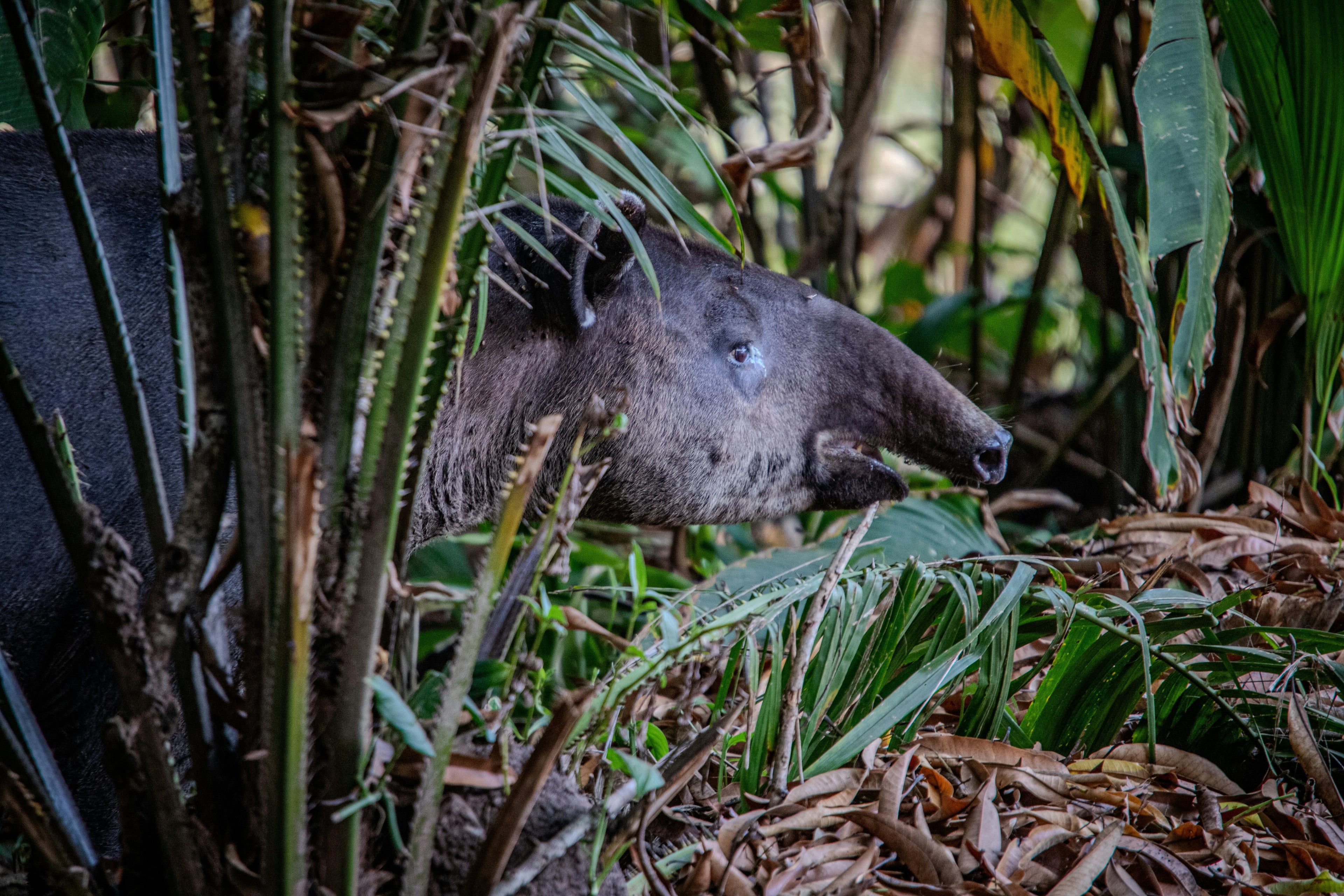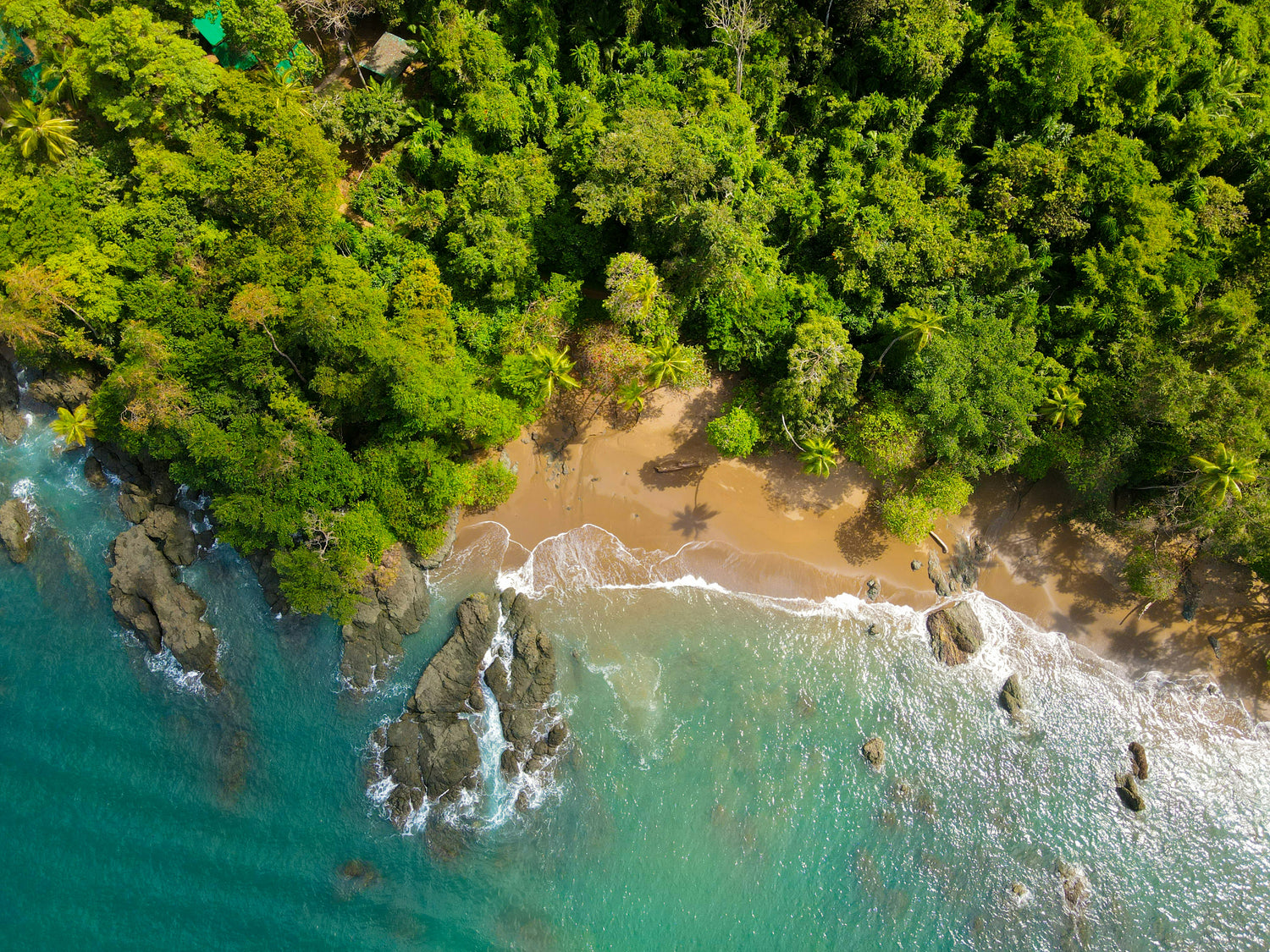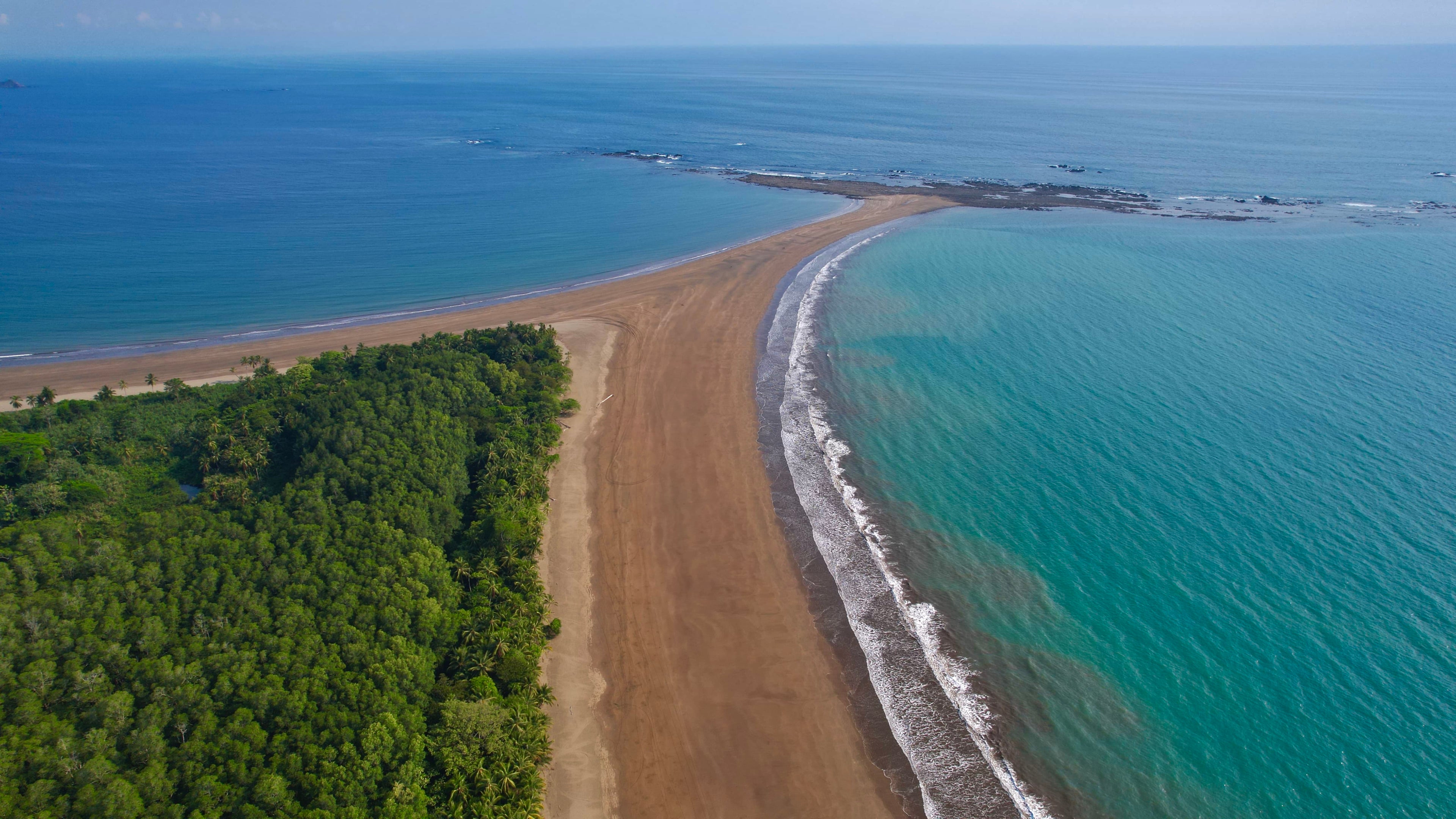
Corcovado National Park
The “Crown Jewel” of Costa Rica’s National Parks

Corcovado offers visitors a rare chance to see jaguars, tapirs, and four species of monkeys in their natural habitat
Corcovado National Park
Covering 424 square km, Corcovado National Park is considered one of the most biodiverse places on Earth. Home to 13 ecosystems, from rainforests to mangroves, Corcovado offers visitors a rare chance to see jaguars, tapirs, and four species of monkeys in their natural habitat.

home to 2.5% of the planet's biodiversity
Top activities in the park include
Sirena Ranger Station Hike: This is the park’s heart, where most wildlife congregates. The hikes around Sirena offer excellent chances to spot tapirs, monkeys, and even jaguars.
La Leona to Sirena Trail: A challenging 20 km hike along the coast and through rainforests, ideal for adventurous hikers looking for a true immersion into the park’s wilderness.
San Pedrillo Waterfall Tour: This shorter hike leads to beautiful waterfalls where you can swim and cool off while surrounded by dense jungle.
Birdwatching: Corcovado is a birdwatcher’s paradise, with over 400 species, including toucans, macaws, and kingfishers. Sunrise is the best time to catch these colorful creatures in action.

Corcovado National Park is one of the top attractions for nature lovers.
Corcovado National Park is one of the most biodiverse places in the world
Corcovado National Park in Costa Rica is one of the most biodiverse places in the world, home to 2.5% of the planet's biodiversity.
Some of Corcovado National Park’s biodiversity features include:
Animal Species
Over 124 mammal species, 375 bird species, 48 amphibian species, and 60 reptile species have been identified here. Among the mammals are the jaguar, puma, white-lipped peccary, tapir, bat, Central American tapir, collared peccary, agouti, and all four species of monkeys found in Costa Rica.
Plant Species
More than 2,000 plant species have been identified, including approximately 700 tree species.
Marine Turtles
The Olive Ridley, green, and occasionally the leatherback sea turtles come here to nest.
Marine Life
A rich variety of marine life thrives in the protected marine areas of the park.
Humpback Whales
To the east of the park lies a breeding area for humpback whales, visited by whales from both the northern and southern hemispheres.
Endangered Species
The park is home to 12 endangered tree species.
Corcovado National Park is one of the top attractions for nature lovers.
Other options in the south
-
Sierpe
Gateway to the Mangroves and Wildlife of the Osa Peninsula
Sierpe is a small town along the Sierpe River, known as the primary access point to the largest mangrove forest in Central America. From here, you can take a boat tour through the mangroves of the Terraba-Sierpe National Wetlands, where you’ll spot crocodiles, monkeys, and countless bird species. Sierpe also serves as a launching point to Isla del Caño for incredible snorkeling or diving experiences. The area is tranquil, surrounded by lush nature, making it a great spot for those seeking peace and rich biodiversity.
-
Drake Bay
Untouched Beauty and Adventure at the Edge of Corcovado
Drake Bay is a secluded coastal area with about 1,000 residents, famed for its proximity to Corcovado National Park and Isla del Caño. It’s ideal for those looking to dive into Costa Rica’s wild side. The bay itself offers calm waters perfect for snorkeling, and its remote location means fewer tourists, creating an authentic jungle experience. Visitors can take a boat ride to Corcovado, known for its untouched biodiversity, or head out on a whale-watching tour during the migration seasons (July-October and December-March).
-
Puerto Jiménez
Bustling Port Town and Wildlife Haven of the Osa Peninsula
Puerto Jiménez is one of the largest towns on the Osa Peninsula, with a population of around 9,000. This lively port town is the main access point to Corcovado National Park and offers a unique blend of local culture, eco-tourism, and adventure activities. You can kayak through nearby mangroves, go sport fishing in the gulf, or hike in the rainforest surrounding the town. At night, look out for phosphorescent plankton in the calm waters of the Golfo Dulce—an unforgettable natural spectacle.
-
Pavones
Surfer’s Paradise and Secluded Beachfront Bliss
Known worldwide for its legendary left-hand wave, Pavones is a small surf town along Costa Rica’s southern Pacific coast. This quiet area attracts surfers from around the globe eager to catch one of the longest left-hand waves on earth, sometimes stretching up to 800 meters. Pavones also offers an idyllic setting for those who enjoy a relaxed vibe, with scenic beaches, yoga retreats, and horseback riding along the coast. It’s a bit off the beaten path, making it a true retreat into Costa Rica’s natural beauty.
-
Cabo Matapalo
Eco-Lodges and Pristine Beaches at the Peninsula’s Tip
Cabo Matapalo sits on the southern tip of the Osa Peninsula and offers a mix of dense jungle and untouched beaches, perfect for those seeking an immersive eco-tourism experience. It’s known for its rustic lodges, where you can unplug and reconnect with nature. The area is a haven for wildlife—howler monkeys, scarlet macaws, and even jaguars roam freely here. Matapalo Beach and Backwash Bay are also popular for surfing and relaxing, with scenic trails leading to waterfalls and hidden jungle spots.
-
Palmar Sur’s Pre-Columbian Stone Spheres Site
Museo Finca 6
Located in Palmar Sur, Costa Rica, is a fascinating archaeological site best known for its mysterious pre-Columbian stone spheres.Designated a UNESCO World Heritage Site, it is home to these unique, perfectly round stones dating back to around 300-1500 AD, created by the Diquís culture. These spheres vary in size, some reaching over 2 meters in diameter and weighing several tons.
Visitors can explore the museum's exhibits that showcase the region’s ancient cultural heritage, with artifacts, history, and theories surrounding the spheres' purpose and construction.


Ready to explore Uvita and beyond?
So grab your sunscreen, hit the sand, and discover why south coast have the best jungle in Costa Rica.